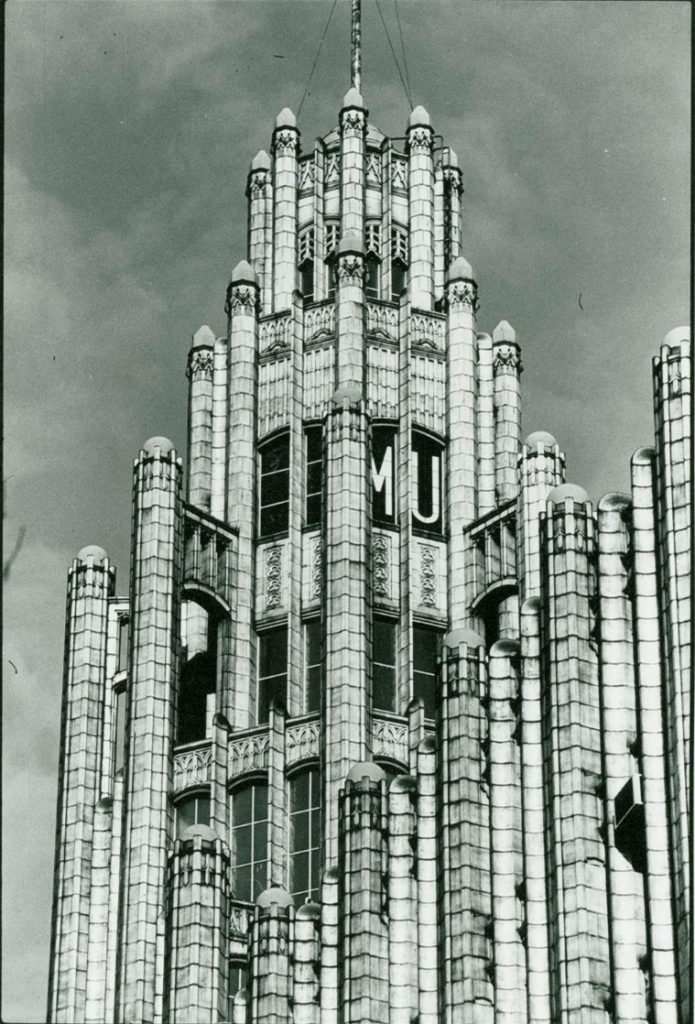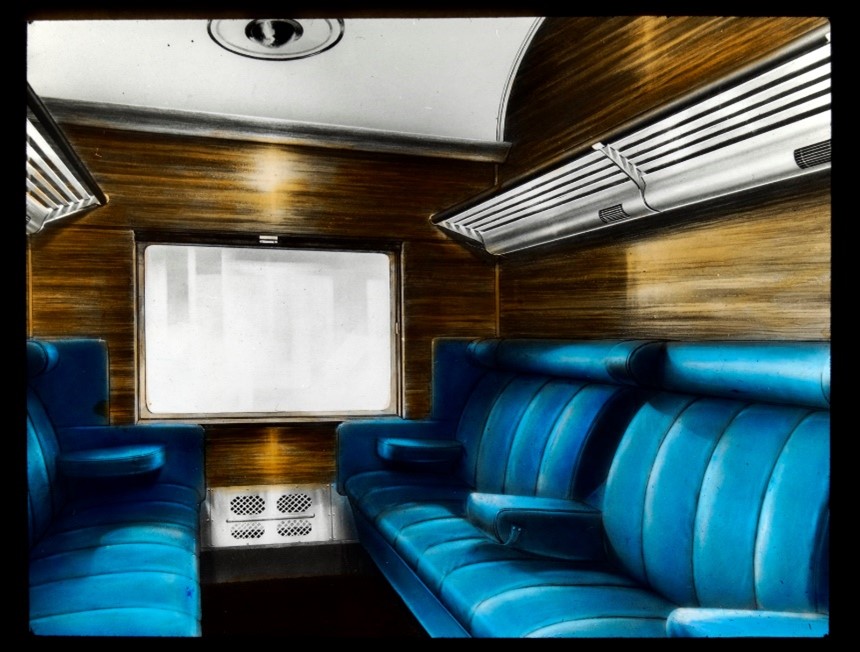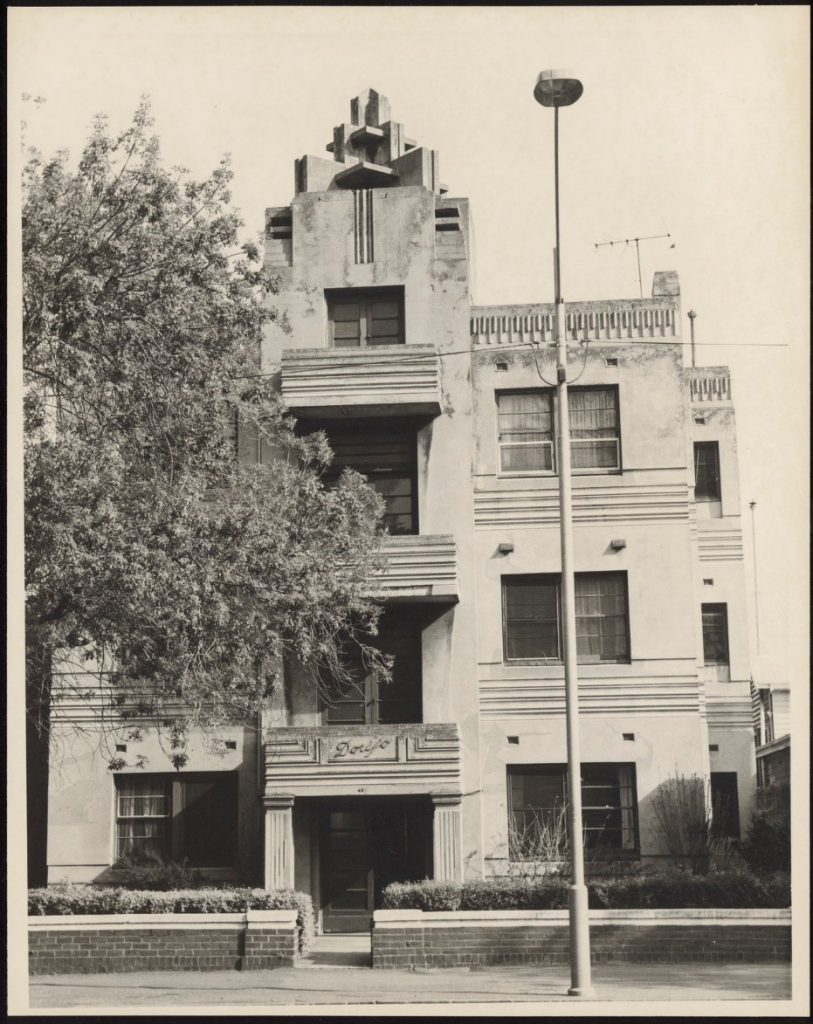Art Deco is often acknowledged as a symbol of post-war optimism which began with the 1925 summer Exposition Internationale des Arts Decoratifs et Industrials Modernes on the banks of the Seine in Paris.1 The exhibition showcased modern architecture, paintings, costume and jewellery, all of which reflected the aesthetic of the roaring twenties.2 The world was celebrating an end to the dark days of WWI.
Art Deco 3 came to Australia slightly later than in Europe and America. It is usually associated with the 1930s and continued to be seen in Melbourne’s architecture up until about 1950. Architects like Walter Burley Griffin, most famous for designing Canberra, set up shop and contributed to a new public architecture. This led to the establishment of iconic Melbourne buildings like the Capitol Theatre and the Manchester Unity Building.

If you were to take a walking tour of Art Deco buildings in Melbourne you could start on Collins Street with the Manchester Unity Building, reaching splendidly up into the sky, and continue on to Little Collins Street where Yule House features the classic coloured tiles of the Art Deco style yet is officially known as Streamlined Moderne. Next you could walk to the Capitol Theatre, often described as Chicago-Gothic-style, and finish off your walking tour with a visit to Mitchell House, another Streamlined Moderne building on Lonsdale Street.
The buildings of Melbourne’s Art Deco era have many unique features, some of which include colourful bricks and curved surfaces. Other buildings in Melbourne that epitomise Modernist design and have been labelled as Art Deco include the Sun Theatre in Yarraville and the Astor Theatre on Chapel Street, St Kilda.

Art Deco, however, did not restrict itself to public buildings. There are many apartment blocks throughout Melbourne which were built with an Art Deco eye. These include Mandalay in St Kilda, Woy Woy at Elwood and the Dorijo flats in East Melbourne.4
Art Deco is not limited to buildings either. If you liked to travel in style there was also an Art Deco train called The Spirit of Progress which launched in 1937 and provided luxurious travel between Melbourne and Albury for those keen to experience a rail journey in the new era.

1934 marked the height of Art Deco’s popularity as Melbourne celebrated its centenary. Architect Robin Boyd declared Art Deco to be a ‘revolution’ in modern architecture.5 In line with this enthusiasm there was much excitement across the city for the Art Deco style.

Sadly, WWII saw much of an end to Art Deco buildings in Melbourne as the country plunged into yet another period of austerity. The legacy of Art Deco’s popularity, though, is such that Melbourne has now gained a reputation as the Art Deco capital of Australia. Regardless of its relatively short-lived fanfare, Art Deco today is seen as both quirky and sophisticated as well as highly prized in the real estate market!
You may also like …
References
- Grow, 2014, Melbourne Art Deco, Brolga Press, Melbourne, p 9
- As above
- As above, p 7. Here, like Grow, I use Art Deco as an umbrella term for Modernist inter-war designs that featured in Europe, Australia and around the world.
- Goad, P, 2009, Melbourne architecture, The Watermark Press, Boorowa
- Boyd, R, 1947, cited in Grow, R, 2014, Melbourne Art Deco, Brolga Press, Melbourne, p 12


My parents bought a house in Caulfield in 1966 which was built and styled in the art deco period. It was double brick and had a semicircular entrance with a wrought iron facade. It had sculptured cornices, polished timber ledges in the lounge/dining room and polished timber skirting boards throughout. The master bedroom had a magnificent sculpted dome in the ceiling. The bathroom had a built-in mauve bath tub with a lion’s head for the faucet, mauve and cream tiles, and two outward opening stained glass windows with those colours in them. We lived in it for over 30 years, and I believe successive purchasers have thankfully retained all of these features..
Art Deco is the style that the French, New York and Melbourne have wonderful examples of.
Is there still an Art Deco club in Melbourne?
However, as a result of Art Deco’s lasting appeal, Melbourne is now widely recognized as the nation’s preeminent Art Deco hub. Despite its brief popularity, Art Deco is now highly sought after in the real estate market because of its unique combination of eccentricity and sophistication.